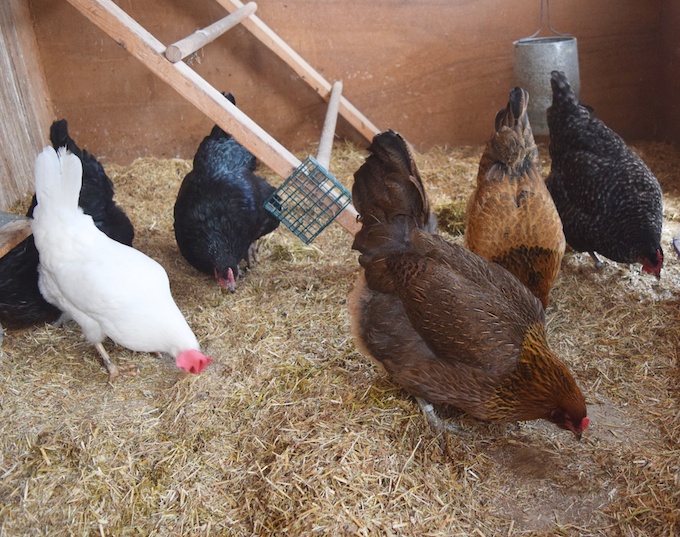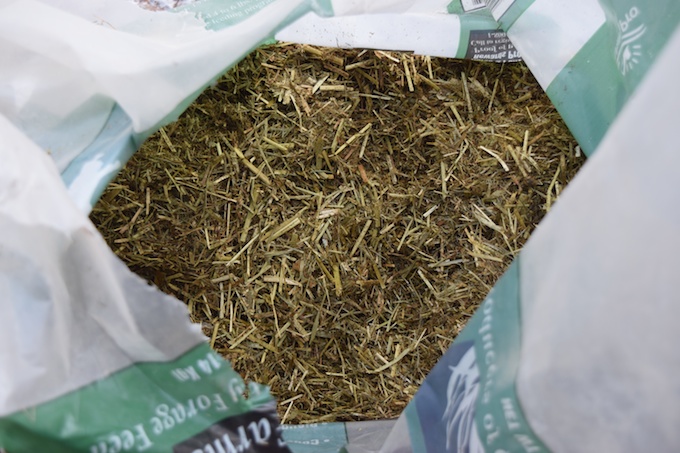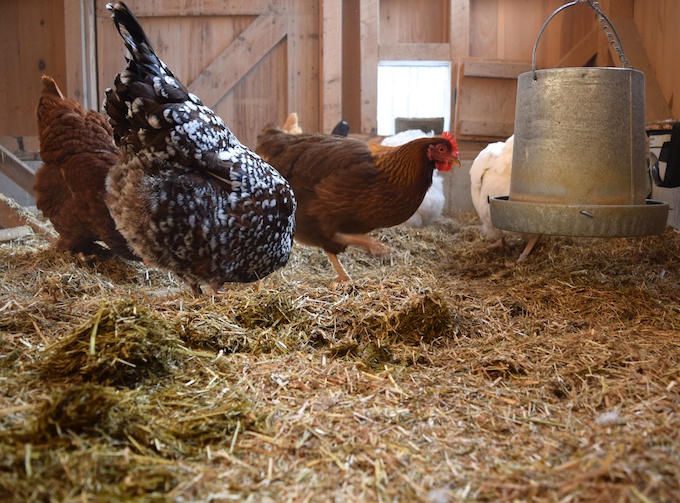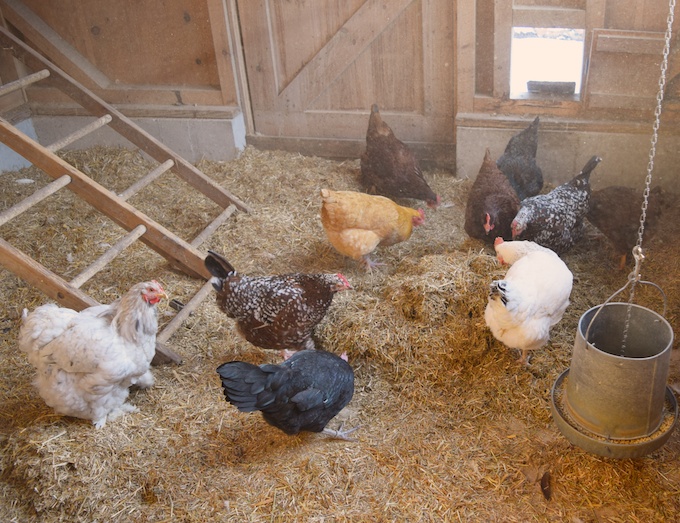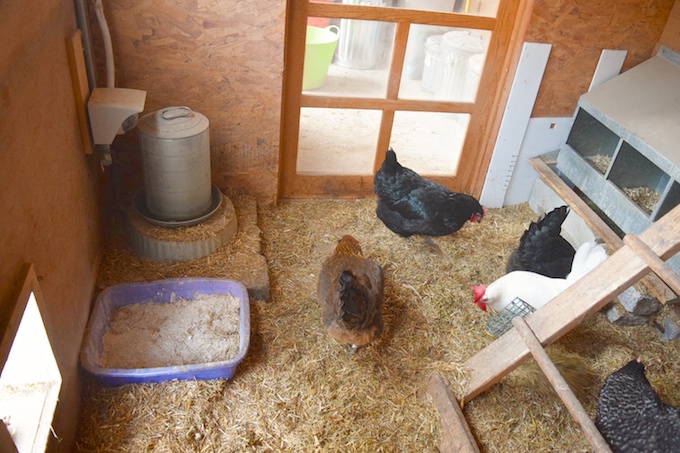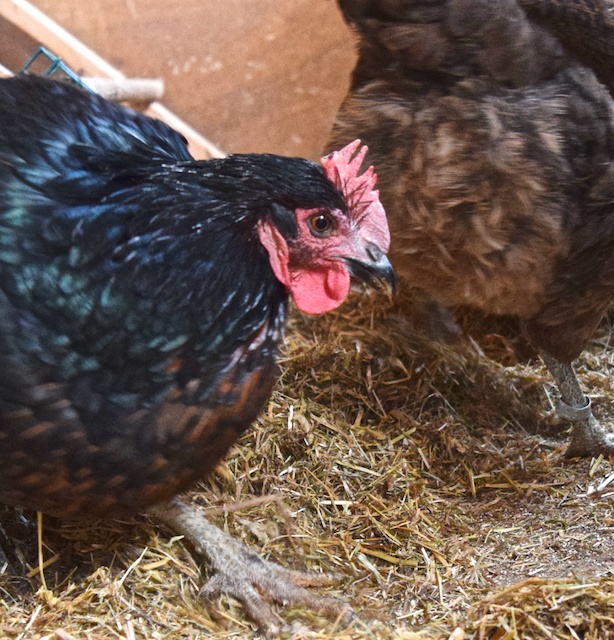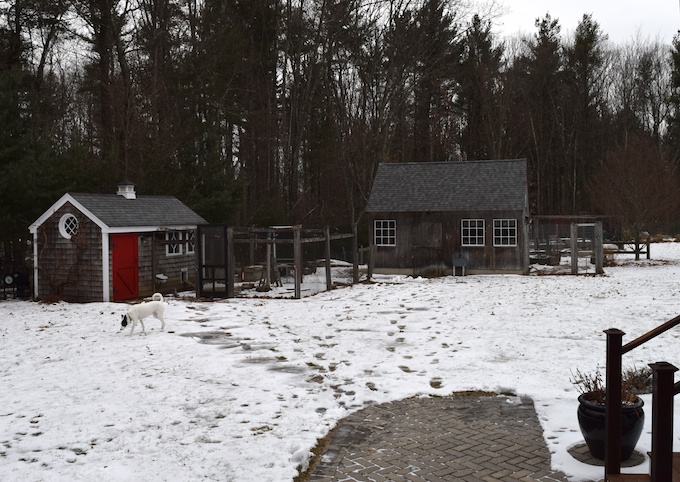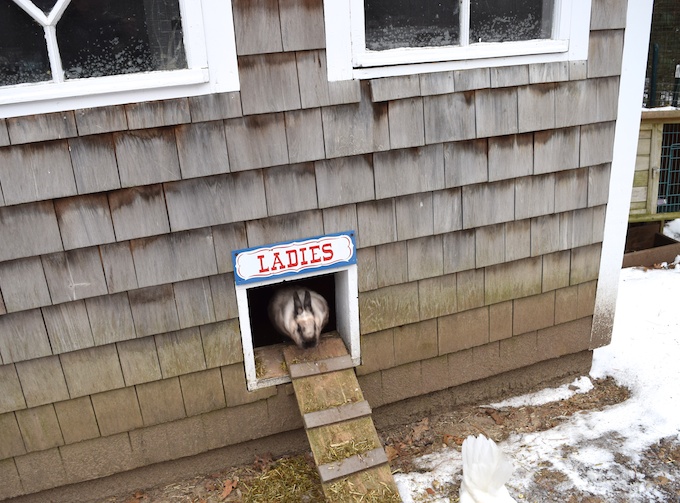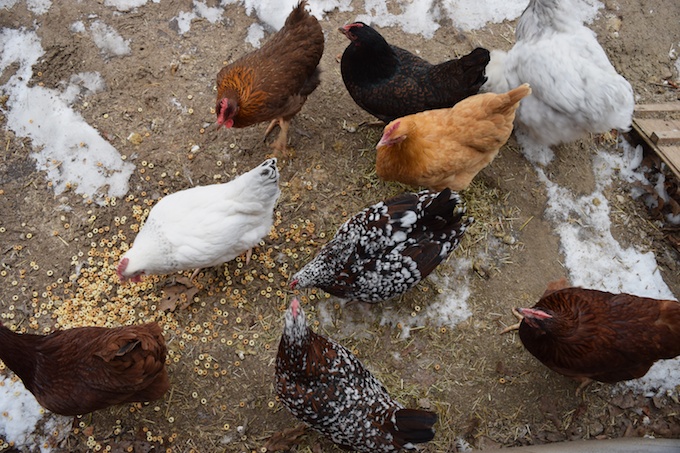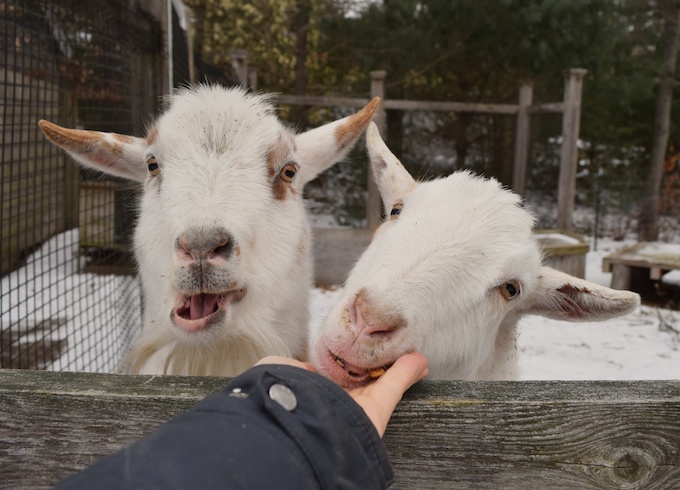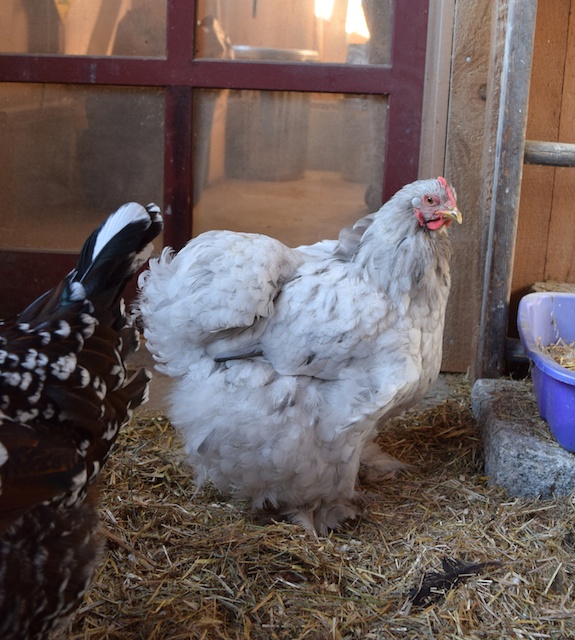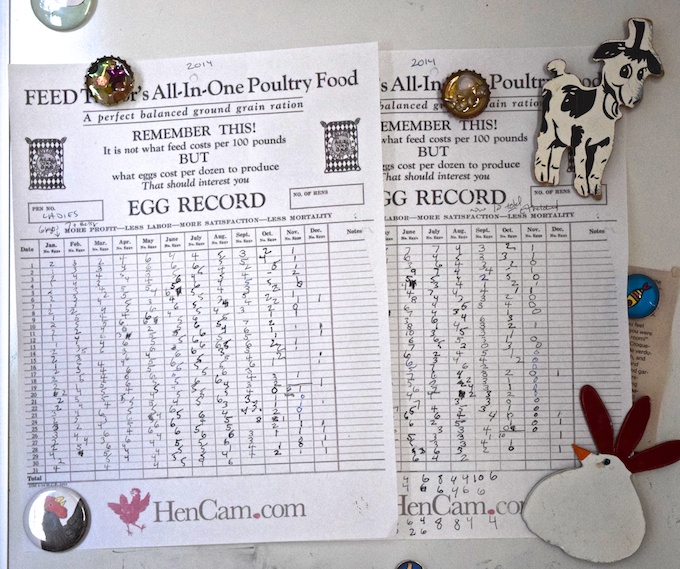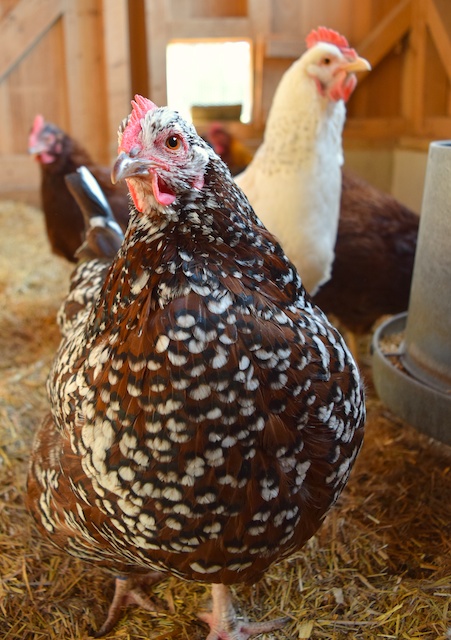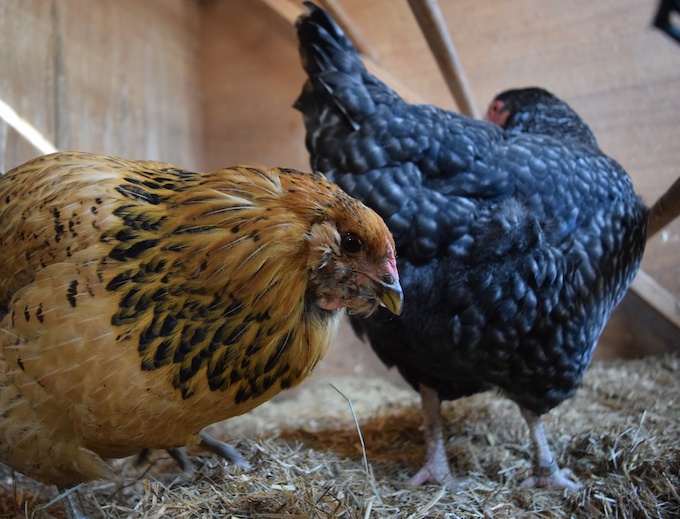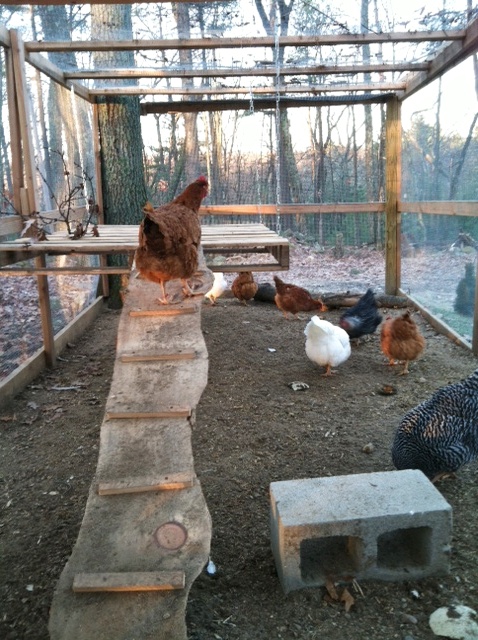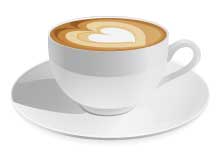11° F this morning. Cold. But,it’s not too cold for chickens if you house and care for them properly.
It’s essential that hens stay active and eat throughout the day. When it’s bitter cold and the wind is blowing, the hens won’t want to go outside. They’ll stand around in their coop. This isn’t good for them. First of all, manure accumulates, and although it’s frozen, it’s still a source of lethal moisture. Coop air is dusty. Combine that with the damp, and you’ll see respiratory disease. So, scoop up the manure daily. Next, bed more deeply. This will keep them warmer (insulation from the cold seeping in from the ground) and will keep the coop drier. I like bedding that also keeps them busy. This bagged chopped hay and straw has lots of tiny tidbits in it for the hens to find. (The brand shown here is Koop Clean. I’ve written about it here.)
Here are the girls, right after I mucked out manure and added extra bedding. Note that all heads are down because they’re busy pecking and scratching!
I also toss in chopped alfalfa, good nutritionally and to encourage foraging activity. This is what it looks like in the bag:
The hens won’t eat all of it, but it mixes in fine with the bedding.
Because the hens kick up such a lot of dust, and bedding goes flying,
I elevate the waterer.
(That purple tub has sand and a cup of food-grade diatomaceous earth for winter dust bathing.)
It’s very, very cold, but the girls are fine!
For more about winter care for your backyard flock, read this FAQ and yesterday’s post.

